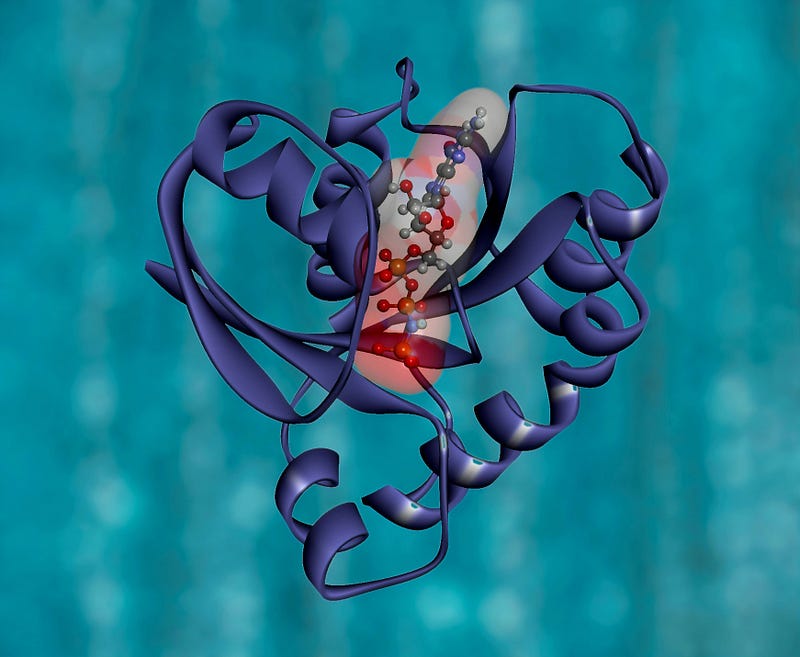
Background
Proteins are the building blocks of life, they are an integral part of our cells. They go into the making of LITERALLY everything.
We have tons of types of proteins such as functional proteins, structural proteins, enzymes, transporter proteins, and many more. The importance of proteins can not be overstated and it is not an exaggeration to say that the functions of proteins are countless.
Proteins consist of smaller blocks called “Amino Acids”. Each protein is composed of a certain number of said amino acids.
For a protein to function normally, the amino acids need to be arranged in the right manner with the right configuration, folding, and number.
Misfolding Of Proteins
If anything were to happen to this folding of proteins, the function is usually lost and a myriad of consequences could occur.
One of those consequences is that, if a protein is not folded properly, it could act as a pathogen and actually damage your body.
An example of this is “Prions”. They are pathogenic protein particles that can damage brain cells and cause Mad Cow disease and in humans, it can cause Creutzfeldt-Jakob disease.
To give you an idea about the seriousness of the matter, here are some of the symptoms of Creutzfeldt-Jakob disease:
- Severe Loss of memory.
- Concentration Problems.
- Confusion.
- Feeling agitated.
- Aggressive Behavior.
- Loss of Appetite, which can lead to weight loss.
- Paranoia.
- Inappropriate emotional responses.
Could Dementia Be The Same?
First of all, you need to understand that Dementia is not a specific disease, it is a general term used to describe many diseases that affect memory, thinking, and the ability to perform daily activities such as Alzheimer’s.
Over the past few decades, some studies suggested that protein misfolding could transmit dementia from one patient to another.
What About Alzheimer’s?
A protein called “Amyloid Beta Protein” is found in the brains of patients with Alzheimer’s and could behave like prions and under infrequent circumstances, it could be spread to other people during medical procedures.
Prion diseases do not transmit through direct contact between humans. But prions can jump from cows to humans through the consumption of contaminated meat.
Similarly, if Alzheimer’s disease can be transmitted via a misfolded protein, it won’t be possible to catch it just by spending time with someone with the disease, — Researchers say.
However, in a small number of cases, concerns were raised that patients could be infected with dangerous Alzheimer’s proteins during neurosurgery if the same tools were used on multiple patients.
Patients could also be exposed when receiving a tissue transplant from a person with misfolded amyloid beta.
In both cases, the effect wouldn’t be seen until decades later as the protein takes a long time to propagate.
Dementia Is Transmissible
In 2006, researchers implanted mice with brain tissue from people who had died from dementia.
These mice developed the classic amyloid beta plaque seen in people with Alzheimer’s disease, whereas the control group did not.
In this experiment, the rate of plaque development was proportional to the amount of amyloid beta in the brain tissue, and the time taken to incubate.
Synthetic amyloid beta injected into the brains of mice had a similar, although less potent, effect.
From The Dead To The Living
In 2015, the idea of dementia being ‘contagious’ began to attract widespread attention.
In a small study published in Nature, researchers examined the brain tissue of eight adults who had died from Creutzfeldt-Jakob disease.
These individuals had received injections of growth hormones derived from human cadavers during childhood, inadvertently exposing them to the misfolded protein responsible for Creutzfeldt-Jakob disease.
Surprisingly, four of these individuals had significant accumulations of amyloid beta in their brains, a hallmark usually observed in older individuals with advanced Alzheimer’s disease.
This unexpected finding raised the possibility that the cadaver injections might have infected people with amyloid-beta proteins, which had snowballed into larger plaque deposits later in life.
Concerns about contamination and Creutzfeldt-Jakob disease halted the usage of cadaver-derived growth hormone injections in 1985.
Decades later, researchers hunted down archived samples of these injections and confirmed the presence of amyloid beta.
When injected into the brains of young mice, these aged samples induced the formation of amyloid plaques and a related condition known as cerebral amyloid angiopathy.
Brain Surgeries
Another study published in 2018 found that eight people who developed cerebral amyloid angiopathy under the age of 60 had undergone brain surgery as children or teenagers.
“These findings raise the possibility that amyloid-beta pathology may be transmissible, as prion disease is, through neurosurgical procedures,” — Researchers concluded.
And Now?
This research suggests the possibility of dementia being transmissible, potentially passing from older to younger individuals if surgical tools are shared.
This is alarming because common sterilization methods, such as boiling, immersion in formaldehyde, or drying, appear ineffective against amyloid beta, the adhesive protein known to obstruct the brains of Alzheimer’s patients.
However, pediatric neurosurgery typically occurs at specialized children’s hospitals, where the equipment is unlikely to have been in contact with Alzheimer’s patients.
While it’s crucial to learn more about Alzheimer’s for better treatment, previous research on the amyloid protein hasn’t always been successful. So, we still don’t have clear evidence on this matter.
